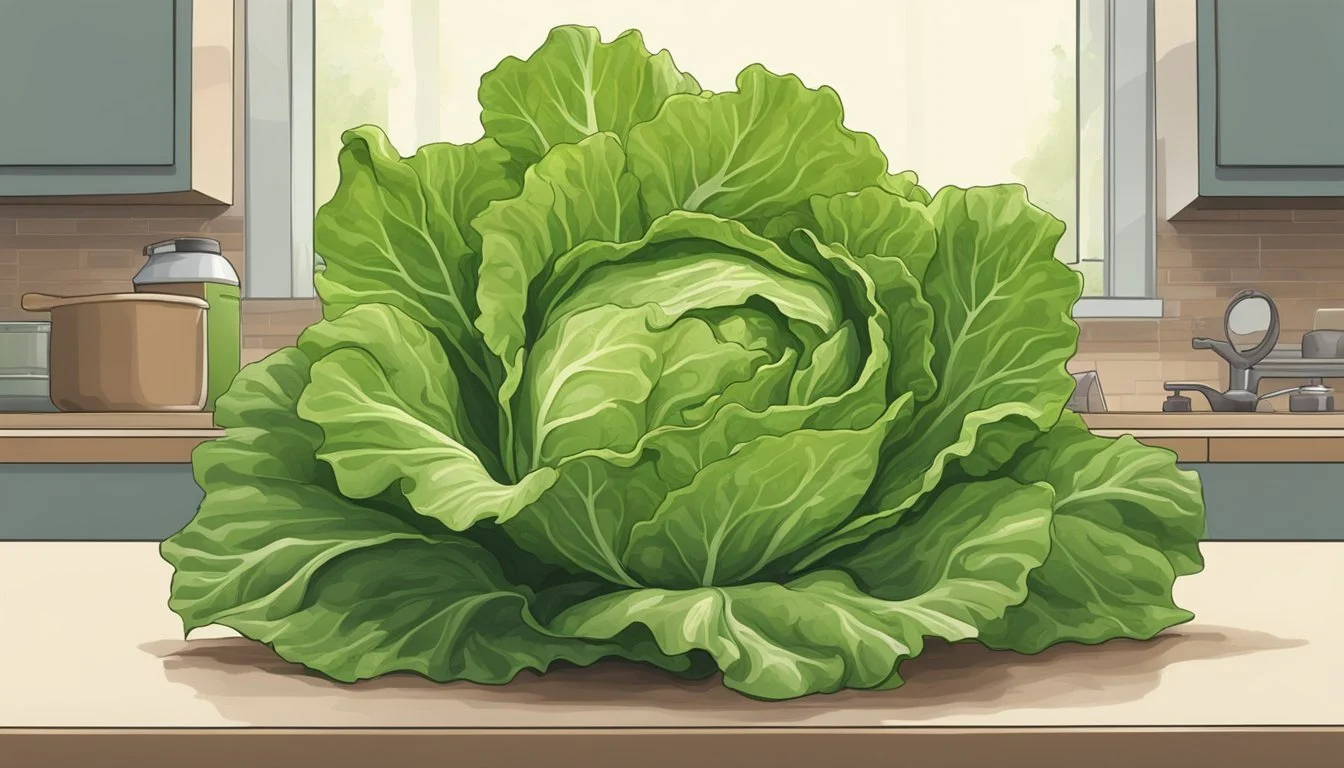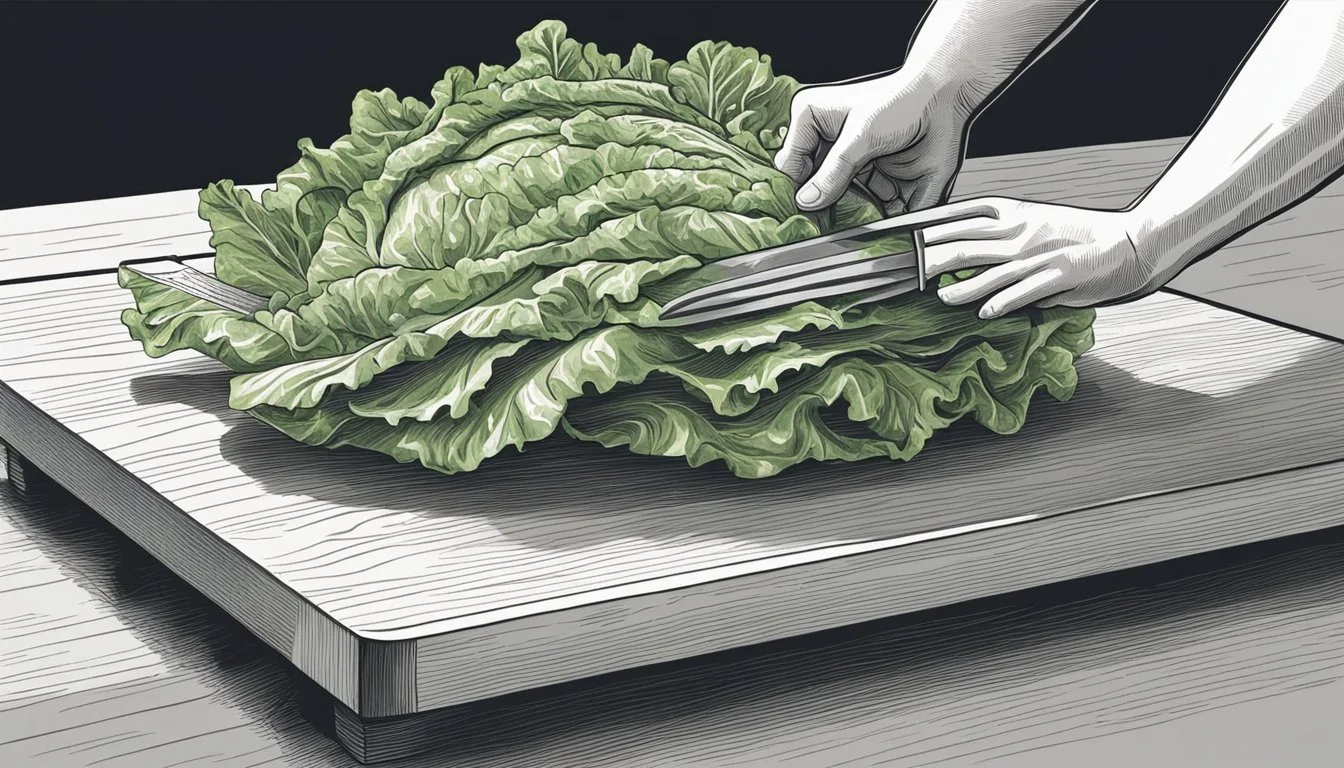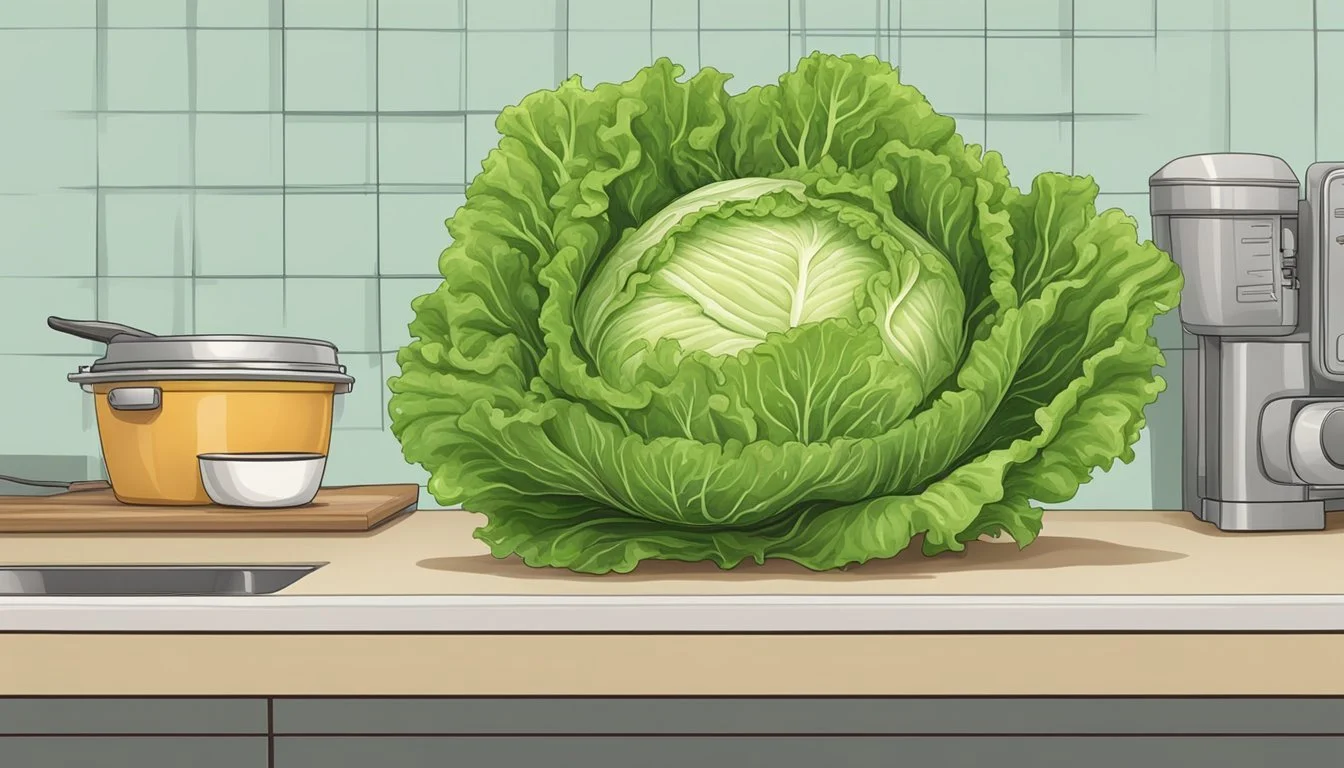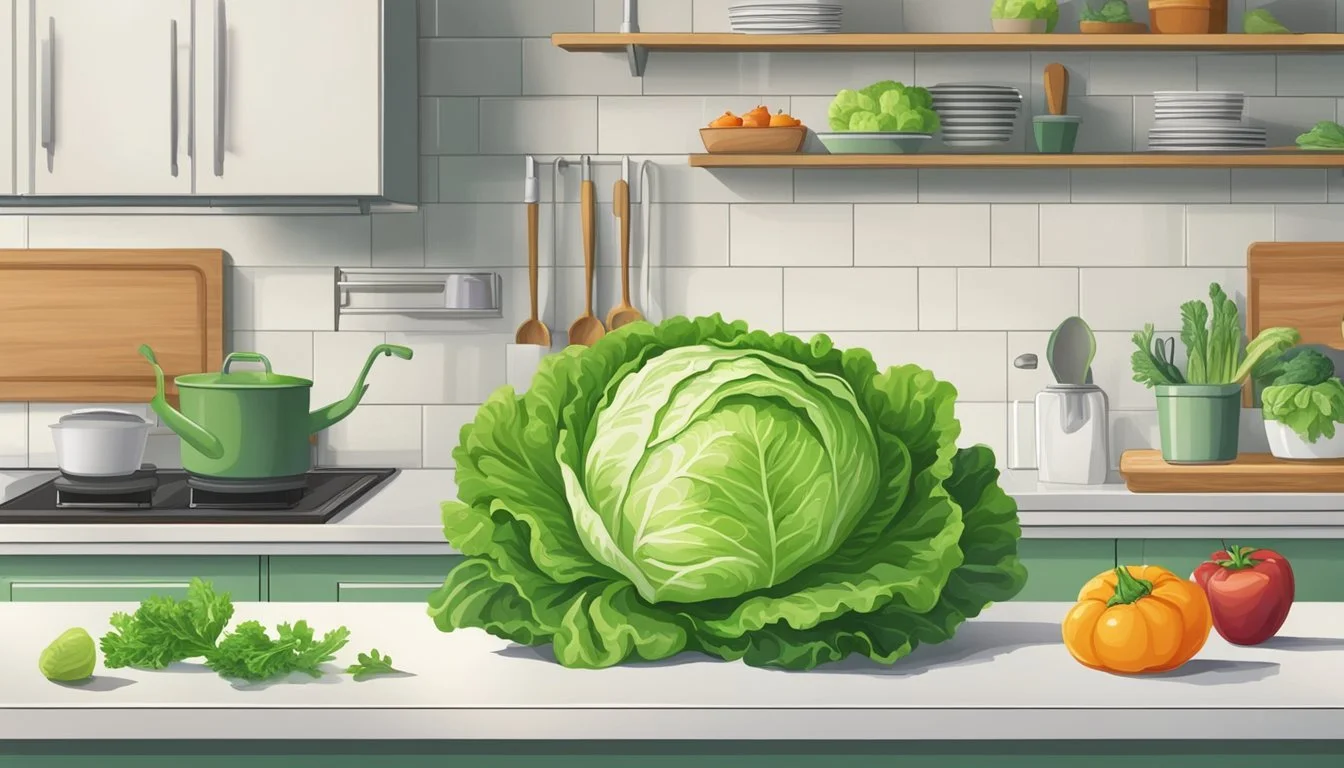How Long Does Lettuce Last?
Shelf Life and Storage Tips
Lettuce, as a perishable leafy green, has a varying shelf life depending on the type and how it is stored. Common types of lettuce such as iceberg, romaine, and loose leaf each have different longevity. In optimal storage conditions, head lettuce like iceberg and romaine can last for one to three weeks in the refrigerator. Loose leaf varieties, on the other hand, are more delicate and generally maintain quality for about seven to ten days when refrigerated.
Storing lettuce properly is key to extending its shelf life and maintaining its crispness and flavor. It's crucial to keep lettuce in the fridge, as room temperature can significantly shorten its lifespan to just a few days. The signs of spoilage in lettuce include leaves becoming overly soft, slimy, or discolored, and an off or spoiled smell. It’s important for consumers to be able to distinguish fresh lettuce from spoilage to ensure food safety and quality.
Fundamentals of Lettuce
Choosing and storing lettuce properly is essential for both quality and longevity. Understanding the types available and what to look for when buying can greatly influence shelf life and crispness.
Types of Lettuce
Lettuce comes in a variety of forms, each with distinct characteristics and storage durations. The most common types are as follows:
Crisphead: Includes Iceberg, known for its crisp texture and round head. It is one of the most durable lettuces, typically lasting 1 to 3 weeks in the refrigerator.
Romaine: Recognized by its elongated leaves and hearty texture, romaine has a slightly longer shelf life compared to other types, usually staying fresh for 1 to 3 weeks.
Butterhead: Comprising varieties like Boston and Bibb, butterhead has soft, supple leaves and a small, loose head. It tends to last for around 7 to 10 days.
Loose-Leaf Lettuce: Including types like oak leaf and red leaf, these lettuces feature leaves that are loosely arranged rather than formed into a compact head. These types typically remain fresh for 7 to 10 days.
Type Texture Shelf Life (Refrigerated) Crisphead Crisp 1 - 3 weeks Romaine Hearty 1 - 3 weeks Butterhead Soft 7 - 10 days Loose-Leaf Delicate 7 - 10 days
Buying Lettuce at the Grocery Store
When purchasing lettuce at the grocery store, one should look for the freshest leaves, as they tend to last longer. Here are specific details to consider for each lettuce type:
Crisphead (Iceberg): Choose heads that are firm and heavy for their size, with no brown spots or wilted leaves.
Romaine: Opt for bunches that have crisp, upright leaves that are free of blemishes or wilting.
Butterhead: The leaves should be tender but not limp, look for minimal discoloring or spots.
Loose-Leaf Lettuce: Look for vibrant color in the leaves and avoid bags with excess moisture or slimy leaves.
Always inspect the lettuce thoroughly, regardless of variety, and consider the packed date or "sell by" date as it can be an indicator of freshness. Fresh, young lettuce will generally last longer than older leaves.
Storing Lettuce for Freshness
Proper storage is crucial for keeping lettuce fresh and crisp. One can significantly extend the life of lettuce by using appropriate containment, controlling moisture levels, and placing it in the optimal fridge environment.
Selecting the Right Storage Bag
For maintaining freshness, the selection of a storage bag is key. Plastic bags are commonly used, but one should opt for perforated bags that allow for some air circulation while retaining the necessary moisture. Bags specifically designed for produce are ideal, as they prevent condensation and spoilage.
Options for bags include:
Perforated plastic bags
Produce-specific storage bags
Reusable produce bags with ventilation
Using Paper Towels
Using paper towels is a simple yet effective technique to manage moisture levels. Inserting a layer of paper towels within the storage bag can absorb excess moisture, which helps to keep lettuce crisp. For a head of lettuce, wrap it in a dry paper towel before placing it into the bag. For loose leaf lettuce, layer it gently with paper towels before storage.
Steps for paper towel use:
Wrap a head of lettuce in a dry paper towel
For leaf lettuce, alternate layers with paper towels
Replace the paper towels if they become damp
Utilizing the Crisper Drawer
The refrigerator's crisper drawer is designed to preserve the freshness of vegetables and fruits by maintaining an optimal humidity level. Store lettuce in the crisper drawer, set to a high humidity level, and ensure that it is separate from ethylene-producing produce like fruits which can accelerate decay.
Crisper drawer tips:
Set drawer to high humidity for vegetables
Do not mix lettuce with fruit in the same crisper
Check the crisper for cleanliness regularly
Extending Lettuce Shelf Life
Maximizing the shelf life of lettuce involves controlling moisture levels, setting optimal refrigerator conditions, and managing outer leaves to maintain its crisp and fresh quality.
Preventing Moisture Buildup
To prevent excess moisture, which can accelerate spoilage and bacteria growth, it is crucial to keep lettuce dry. Wrap the lettuce in a paper or thin cloth towel, which will absorb excess moisture. Store it in a plastic bag with several holes to promote airflow and minimize moisture accumulation.
Optimizing Refrigerator Conditions
The refrigerator should offer a cool, humid environment to preserve the freshness of lettuce. The crisper drawer is designed for this purpose, with a higher humidity level conducive to keeping vegetables like lettuce fresh and tight-leaved for longer. Keep the crisper drawer set to high humidity, and ensure not to store ethylene-producing produce, such as fruit, alongside lettuce to avoid premature spoiling.
Handling Outer Leaves
Regularly inspect the lettuce and remove any damaged or outer leaves that are wilted or slimy, as they can harbor bacteria and lead to faster decay of the remaining leaves. By removing these leaves, the inner leaves stay protected, thus extending the overall shelf life of the lettuce.
Signs of Lettuce Spoilage
Detecting spoilage in lettuce is essential to ensure food safety and maintain quality consumption. The spoilage of lettuce manifests through several distinct signs.
Visual Indicators
Lettuce showing signs of spoilage often exhibits brown or dark spots which can indicate the beginnings of rot. The once vibrant green leaves may appear wilted or discolored, moving towards a yellow or brownish hue. Bruising on the lettuce is another visual cue that the product is deteriorating.
Texture Changes
When lettuce begins to spoil, its texture significantly changes. Fresh lettuce is known for its crispness, but as it ages, it can become limp, soft, or soggy. A clear indication of spoilage is when the leaves or stems feel slimy or mushy to the touch—this suggests bacterial growth and decomposition.
Smell as an Indicator
Fresh lettuce should have a light, green, and sometimes almost imperceptible smell. If a rotten or sour smell is noticeable, this is a strong indicator that the lettuce is going bad. This off-putting odor is a result of bacterial or fungal activity and suggests that the lettuce is not suitable for consumption.
Preparation and Usage Tips
Proper preparation of lettuce not only helps in extending its shelf life but also ensures it's clean and ready for consumption.
Washing and Drying Lettuce
When one washes lettuce, it is crucial to remove any dirt or potential contaminants. Begin by separating the leaves to ensure a thorough clean. Experts recommend using cold water to wash the greens. A salad spinner is an ideal tool for drying lettuce as it efficiently removes excess water without damaging the leaves. If a salad spinner is not available, one can gently pat the leaves dry with a clean paper towel.
Reviving Wilted Lettuce
Lettuce tends to lose moisture and wilt when stored over time. To revive wilted greens, one should soak them in cold or ice water for about 30 minutes or up to an hour. This process rehydrates the leaves and restores their crispness. After soaking, it is important to drain the lettuce well and dry it thoroughly to prevent spoilage.
Miscellaneous Concerns
When storing lettuce, two key areas to address are preventing contamination and understanding the impact of ethylene-producing fruits. These factors are critical in maintaining the lettuce's freshness and safety.
Preventing Contamination
Lettuce, particularly when cut or damaged, is susceptible to bacterial growth which can lead to food poisoning. Minimizing contamination is essential. One should always wash lettuce thoroughly before storage and use. After washing, it's advisable to pat it dry with a clean towel or use a salad spinner to remove excess water, as moisture promotes bacterial growth. Storing lettuce in a clean, airtight container or in a sealed bag with a paper towel helps maintain freshness and create a barrier against harmful bacteria.
Dealing with Ethylene Producers
Certain fruits, such as apples, peaches, and tomatoes, produce ethylene gas, a natural plant hormone that can accelerate ripening in other produce. Lettuce exposed to ethylene can spoil quicker. It is important to store lettuce away from these ethylene producers. Ideally, lettuce should be kept in a separate section of the refrigerator, such as the crisper drawer, to avoid premature wilting or spoilage.
Lettuce Longevity
Lettuce longevity reflects the shelf life of different varieties of lettuce, influenced by their unique characteristics and storage conditions.
Expected Lifespan
Heads of lettuce: Depending on the variety, lettuce can have a varied shelf life. Romaine and iceberg lettuce typically last the longest, with an expected lifespan of about 1 to 3 weeks when stored correctly in the refrigerator.
Loose-leaf lettuce: Varieties such as butterhead or green leaf tend to be more perishable, with a shorter expected lifespan of about 7 to 10 days under optimal storage conditions.
Factors Affecting Longevity
Several factors play a crucial role in determining the longevity of lettuce:
Storage method: Lettuce should be stored in the refrigerator, ideally wrapped in paper towels to absorb excess moisture and then placed in a perforated bag to allow airflow and reduce spoilage.
Initial freshness: The shelf life of lettuce also hinges on its state at the time of purchase. Lettuce that appears young and fresh typically lasts longer than lettuce that has already started to show signs of wilting or spoilage.
Humidity and temperature: Refrigerators set to maintain a consistent temperature around 40°F (4°C) and moderate humidity levels help prolong the lifespan of lettuce by slowing down the processes that lead to spoilage.
It is important to note that regardless of the type of lettuce, one should always inspect it for signs of spoilage such as sliminess, off-odor, or discoloration, which indicate that the lettuce is no longer fit for consumption.






